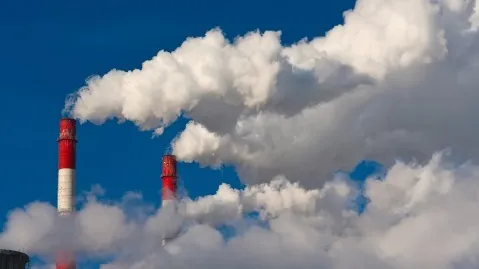
Energy-related CO2 emissions reach all-time high in 2021: IEA
Global emissions reached 36.3 billion tonnes, led largely by China.
Global carbon dioxide (CO2) emissions related to the energy sector rose by 6%, reaching the highest-ever level of emissions of 36.3 billion tonnes as markets relied on coal power amidst economic rebound from the pandemic, according to the International Energy Agency (IEA).
In a statement, the IEA said the over two billion tonnes increase in global CO2 emissions was the largest in absolute terms, offsetting the decline due to the pandemic. It added that the recovery in energy demand was exacerbated by adverse weather and energy market conditions which led to the increase in coal use.
The IEA said that coal accounted for over 40% of the overall growth in the CO2 emissions, reaching an all-time high of 15.3 billion tonnes, whilst emissions from natural gas saw a rebound as well to 7.5 billion tonnes, exceeding the 2019 levels.
Emissions from oil, meanwhile, were at 10.7 billion tonnes, remaining significantly below pre-pandemic levels because of the limited recovery in global transport activity, especially the aviation sector.
“The use of coal for electricity generation in 2021 was intensified by record high natural gas prices. The costs of operating existing coal power plants across the United States and many European power systems were considerably lower than those of gas power plants for the majority of 2021,” it said.
“Gas-to-coal switching pushed up global CO2 emissions from electricity generation by well over 100 million tonnes, notably in the United States and Europe where competition between gas and coal power plants is tightest,” the IEA added.
It noted that the increase in carbon dioxide emissions was largely driven by China which saw a 750 million tonnes increase between 2019 and 2021, adding that it was the only major economy that experienced economic recovery in the last two years.
The increase in emissions in China was due to the sharp rise in electricity demand that is largely reliant on coal power, according to the agency, noting that coal was used to meet more than half of the rise in electricity demand as the growth exceeded the increase in supply from low emissions resources.
China experienced the largest ever increase in demand at almost 700 terawatt-hour, it said.
“The emissions increases in those two years in China more than offset the aggregate decline in the rest of the world over the same period. In 2021, China’s CO2 emissions rose above 11.9 billion tonnes, accounting for 33% of the global total,” it said.
India’s emissions also rebounded in 2021, rising above 2019 levels, as coal-fired generation reached an all-time high, increasing 13% more than its 2020 level.
Meanwhile emissions in advanced economies rebounded “less sharply, signalling a more permanent trajectory of structural decline.”
The CO2 emissions of the United States in 2021 were 4% below their 2019 level, whilst the European Union were 2.4% lower, and Japan saw its emissions dip by 3.7% in 2020 and rebounded by less than 1% in 2021.
Despite this, the IEA said renewable energy sources and nuclear power had a higher share of global electricity generation than coal last year, with renewables-based generation reaching an all-time high and exceeding 8,000TWh, which is 500TWh beyond its 2020 level.



















 Advertise
Advertise






